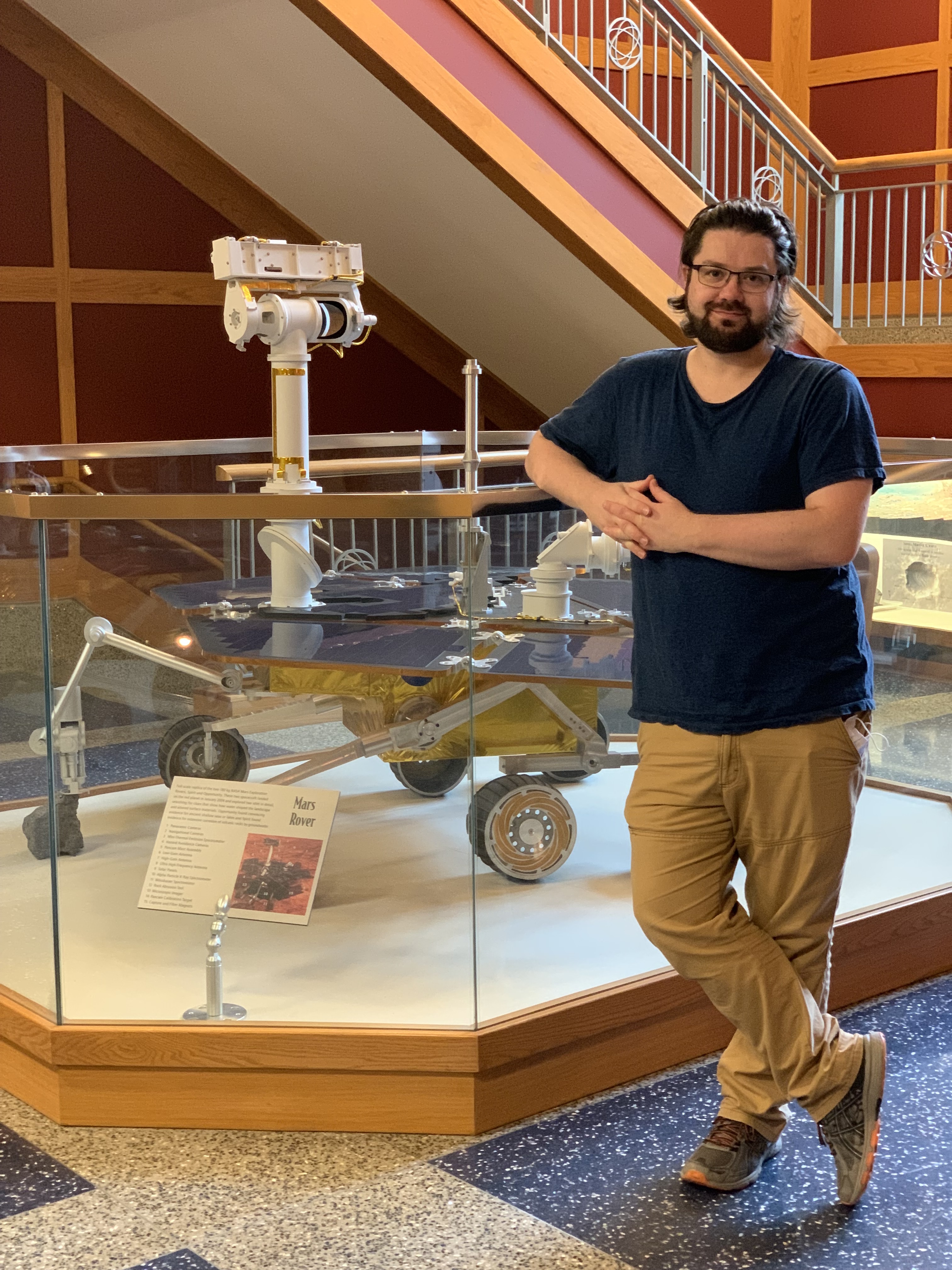
Paul Byrne joined the Department of Earth and Planetary Sciences as an associate professor in July 2021. Byrne's research focuses on comparative planetary geology — comparing and contrasting the surfaces and interiors of planetary bodies, including Earth, to understand geological phenomena and why planets look the way they do. His projects span the solar system from Mercury to Pluto and, increasingly, extend to the study of extrasolar planets. Currently, Byrne is participating in the Planetary Science and Astrobiology Decadal Survey, where he serves as chair of the panel on Venus. Byrne is also a fellow of WashU's McDonnell Center for the Space Sciences.
In this Q&A, Byrne describes exploring alien worlds, Earth’s surprisingly cool next-door neighbor (no, not Mars), and how Twitter can be a productive platform for science.
I’m intrigued by this idea of comparative planetary geology. What does it mean to compare planets at a systems level?
The whole idea is underpinned by this concept called comparative planetology, which is a handy phrase to describe the idea that planets in the solar system are more similar than they are different. Take the inner rocky planets, for example – Mercury, Venus, Earth, Mars, and the Moon. Yes, they are pretty different. They’re different sizes with different orbits; they look different and have different colors. But, they’re fundamentally the same stuff. Their interior structures overall are similar. Once you understand the commonalities, you start to figure out the rules that govern how fast planets form, how they behave once they form, how they evolve, and what happens to their surfaces. That’s what I mean by systems level.
How can studying other planets help us learn about Earth?
We see the same features everywhere. Things like impact craters and weather patterns might be different sizes or strengths or operate at different speeds on other planets, but the fundamental physics is the same as here on Earth. Those shared features help us understand more about Earth’s history and evolution.
One of the things that characterizes Earth and sets it apart from other places is that it has plate tectonics, which – together with our water-rich atmosphere – is really good at eroding and literally burying older rocks into the interior of the planet. So the vast majority of Earth’s history is just gone, swallowed up by the Earth itself, but that ancient history is preserved on the surfaces of Mars, the Moon, and Mercury. If you can look at those bodies, you can be pretty sure that similar processes were operating on Earth way back when, but they’ve been obscured over time.
How else is comparative planetology expanding our horizons?
We can also use Earth to understand other planets. For example, say, I can’t visit that big circular thing we see on Mars, but it sure looks like a crater I’ve visited on Earth. Therefore, I can assume it’s similar, and I can look for reasons why there are subtle differences. Then we can use what we’ve learned about planetary systems to understand and compare planets with each other, without necessarily involving Earth.
That becomes really helpful as we start looking at alien worlds farther from home. Once you understand these systems – how the whole planet interacts between its interior, its surface, its atmosphere, its history, and its future – you get a sense of what sorts of things we might expect on any planet. That doesn’t mean we have the whole thing figured out. Far from it!
What’s really exciting is in the last 10-15 years, we’ve discovered more and more extrasolar planets, or exoplanets, and we’re realizing that the most common kind of exoplanet we’ve found so far is actually not found in the solar system. We don’t know why that is, but it’s an interesting finding. As we’re beginning to discover more and more planets, we can start to expand our sense of what they might look like and what processes they might have on the basis of what we can see in the solar system. Then we can ask, what happens when you tweak certain variables? What exotic worlds might be out there? And, fundamentally, are we alone in the universe? Those questions will take centuries to answer.
What planet are you most excited about right now?
Right now a lot of my focus is on Venus. If you look at the surfaces of Mercury, the Moon, or Mars, there are lots of impact craters, tectonic structures, and volcanoes, but it’s kind of manageable. You look at Venus, and it’s just bananas. There are tens of thousands of volcanoes, tectonic structures, lava flows, and other weird structures you don’t see anywhere else in the solar system. Plus, it has a runaway greenhouse effect, so it’s a pretty terrible place with lots of weird things worth studying. But how did Venus get that way? How did this planet that is so close to Earth in so many ways turn out so differently?
There’s a scenario where Venus might’ve been ok and had things like clouds and liquid water oceans in the last billion years. Then, through some cataclysmic geological events that we think might be volcanic, it lost those features. Or, Venus might have started off terrible and stayed that way because it’s just slightly too close to the sun. In that case, the determiner of whether you get Earth or Venus is simply how far you’re born from your star. Either way, Venus is the key to understanding whether the outcome we have on Earth is the expected one for a planet this size, or if we somehow got lucky. That’s pretty important both for understanding the history of Earth and for making sense of what we’ve recently been able to infer about rocky worlds orbiting other stars and their potential habitability.
With newly announced Venus missions from NASA and other agencies, we’re going to see a lot more Venus in the news and popular media and literature in the decade.
Speaking of popular media, you’re very active on Twitter (@ThePlanetaryGuy). What advantages do you see in social media for scientists?
When I joined Twitter, my original goal was to develop my professional network. I was mostly connecting with other academics as a way to share research and find potential collaborators. Since my following has grown, it’s been terrific to interact with lots of different people. I try my best to elevate and amplify the voices of early career people as much as I can. It’s also been really cool to connect with journalists and have a way to share planetary science and what it’s actually like to be a scientist with the public. Making science accessible and expressing the nature of uncertainty – in the sense that sometimes we really don’t know the answer – is really important, especially now. It’s a privilege to do this bit of public service. I’m raising awareness about science, but I also do it for myself and my own enjoyment.




